
Go West: The filming locations of Yellowstone and more
November 2024
By Jeff Wilser
From majestic Montana (where Yellowstone is filmed) to otherworldly Utah (a favored location for Clint Eastwood), few places are as inseparable from an on-screen genre as the American West. Those rolling prairies and sweeping dunes have always played a starring role in westerns, from John Wayne classics right through to today’s most watched scripted series, following the Dutton family dramas in the epic surrounds of Yellowstone. Countless Westerns have been filmed across the region’s valleys, canyons, and bluffs—and many locations are easy to visit on a single road trip. So grab your boots: Here’s where to start your own adventure.
Discover the real-life filming location of Yellowstone in Darby, Montana
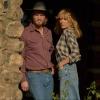
Kacey and Kelly Dutton in the new season of Yellowstone. Photo, and top, courtesy of Paramount Network
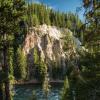
The Grand Canyon of the Yellowstone
Yellowstone creator Taylor Sheridan prides himself on authenticity, and he finds it at the show’s primary filming location, the Chief Joseph Ranch in Darby, Montana—also known as the Dutton Ranch (pictured top). It’s legitimately a family-owned working cattle ranch, though of course, you won’t meet the Duttons are purely fictional. The rugged landscapes of the surrounding area ooze history, and for good reason. Established in 1872, Yellowstone is regarded as the world’s first national park and spans over 2.2 million acres. It’s home to more than half of the world’s geysers (including Old Faithful, which erupts every 90 minutes), and has 900 miles of hiking trails—and the world-class fly-fishing featured in A River Runs Through It.
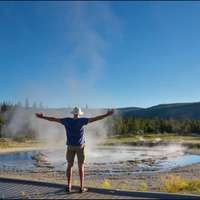
Old Faithful, Waterfalls & Wildlife
Explore the wonder of Yellowstone National Park on this all-day tour
Chase the sets of Horizon: An American Saga in Moab, Utah
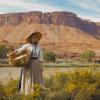
Sienna Miller co-stars in the film, along with the red rocks of Moab. Photo: Richard Foreman/courtesy of Warner Bros Pictures
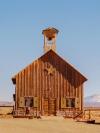
The atmospheric Little Far West church, just outside town
Kevin Costner knows Westerns and he knows the West, spending much of his post-Dances with Wolves career in a cowboy hat. So, for his two-part film, Horizon: An American Saga, he chose to shoot in the windswept mesas of Moab, Utah, where he worked with local ranchers to manage and direct the cattle. The red rocks can look almost otherworldly, which is why they stood in for Mars for 2012’s John Carter. And if you’re truly daring, you can take a quick detour to nearby Bluejohn Canyon—the extremely narrow canyon that felled James Franco’s character, and the real-life climber he played, in 127 Hours. (Pro tip: Don’t go alone and you won’t need a saw.)
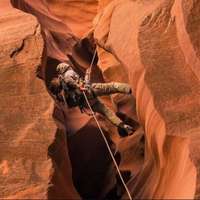
127 Hours Canyon Adventure Tour
An action-packed trip to Bluejohn Canyon
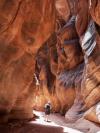
Buckskin Gulch, part of filming location Paria Canyon
Hunt down the The Outlaw Josey Wales’ filming locations in Kanab, Utah
If Clint Eastwood were a location he would be Kanab, Utah. They’re both Old West, tough, leathery, and in countless movies. Smack in the middle of sandstone cliffs, sagebrush, sand dunes, and national parks like Zion and the Grand Canyon, Kanab is known as “Little Hollywood” thanks to its prominence in films and shows like Gunsmoke, The Lone Ranger, Maverick, Planet of the Apes, and, of course, The Outlaw Josey Wales. In one of his earliest outings as a director, Eastwood used the rugged settings near Kanab (like the rocky terrains of Johnson Canyon and Paria Canyon) to ground Josey in realism, establishing his trademark naturalistic style.
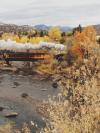
The Durango & Silverton Railroad: No robberies, please
Follow Butch Cassidy and the Sundance Kid to classic Colorado’s Durango
When Butch Cassidy and the Sundance Kid director George Roy Hill wanted a location that screamed classic American West, he chose the saloon-vibes of Durango, Colorado, which was founded in 1880 by a railway company to serve goldminers. Many of the original buildings still exist. The film’s iconic train robbery was filmed on the historic Durango & Silverton Narrow Gauge Railroad, which is still in service and can be ridden today. Durango also featured in the films City Slickers, Stagecoach, and John Wayne’s True Grit.
Visit the filming location of Forrest Gump’s famous run
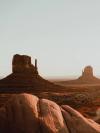
The buttes of Monument Valley are bona fide film stars
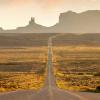
The road where Forrest Gump decided, “Think I’ll go home now”
The red and orange hues of Monument Valley, Arizona, serve as visual candy for Westerns galore, from Stagecoach (where John Ford collaborated closely with the Navajo Nation) to The Searchers, to Westworld, where the towering buttes help ground the AI-infused show in a familiar setting. Another major movie moment happened here: Remember “Run, Forrest, run”? We all know what happens next: He keeps running and running and running and then, finally, he stops in the middle of nowhere. But this is not nowhere. It’s the striking desert landscape of Monument Valley—now known as “Forrest Gump Point.”
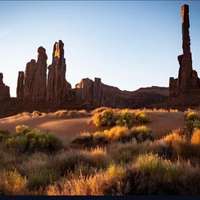
Monument Valley Tour
See famous film sets and explore areas only accessible with a Navajo guide
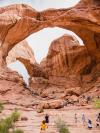
Double Arch, the park’s tallest rock formation
Where Indiana Jones filmed his last crusade: Arches National Park, Utah
While this is not technically a Western, few characters embody adventure like Indiana Jones. And when Steven Spielberg needed a dramatic, rugged backdrop for the opening flashback scenes of Indiana Jones and the Last Crusade, he turned to the vibrant red rocks of Arches National Park, Utah. There are over 2,000 natural arches in the park (young Indy only glimpsed a few), which you can explore for yourself in a sprawling network of hiking trails. The spiky rocks are also featured in City Slickers 2 and Thelma & Louise—just keep your eyes peeled for any sudden cliffs.
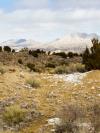
The rugged terrain of Bonanza Creek Ranch
Explore the real-life location of 3:10 to Yuma at Bonanza Creek Ranch, New Mexico
Much of the Russell Crowe-starring 3:10 to Yuma (2007) was shot in the foothills of Bonanza Creek Ranch, New Mexico, which sprawls over thousands of acres and includes film sets used by Westerns for decades—from Blazing Saddles to Silverado to Lonesome Dove. Then there’s the nearby city of Santa Fe itself, where the unique blend of Spanish, Native American, and Mexican influences gives a vibrancy to films like Crazy Heart, where Jeff Bridges’ country music singer performs in actual venues like Evangelo’s Cocktail Lounge.
Yellowstone returns on November 10 at 8pm ET/PT on Paramount Network
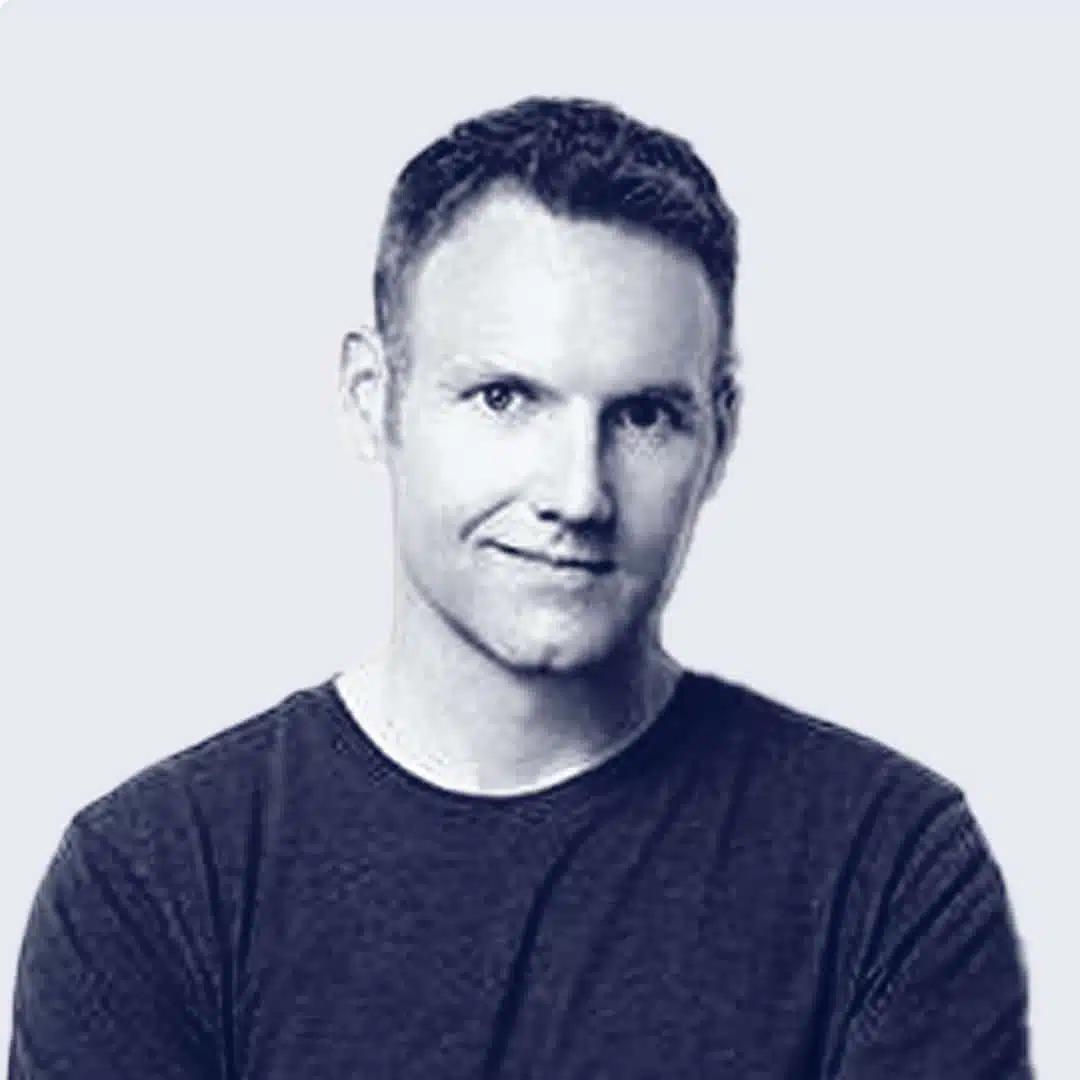
Jeff Wilser is the author of seven books, a frequent traveler (living in 24 countries in the three years to 2020), and a contributor to The New York Times, GQ, and Fast Company.
